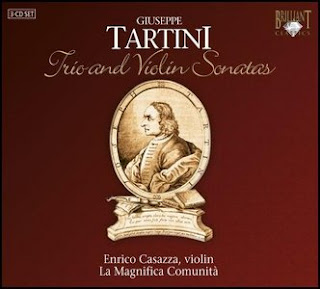Tartini (1692-1770) Violin concertos Vol.1
DDD | mp3@320 | booklet/covers | 137 Mb | Rapidshare
Date CD: Feb 2001
“World premiere recordings
There is great cause for celebration here with these two volumes of Tartin Violin Concertos. Recorded at the Hungaroton Studio in Budapest the first volume from 2001 comprises what are claimed to be premiere recordings of all four Concertos and the second volume from 2003 includes première recordings of the two Concertos, D 7 and D 20. It seems that the manuscripts of all eight scores were discovered at the Bibliothèque Nationale in Paris and were edited for these recording sessions by the multi-talented György Vashegyi.
Tartini broke little new ground in terms of great innovation but did make some advancements to the conventional concerto form, for example: a brief stanza at the start of the concerto; heightened use of ornamentation and increased technical virtuosity for the soloist became dominant features. Beside the solo violin passages he introduced a new ‘inaugural capriccio’ section in the Allegro movements to allow the soloist further opportunity to display technique.
Particularly successful are Tartini's beautiful slow movements that frequently plumb real emotional depths, yet still maintain a reverential grace and dignity. The more I hear Tartini, especially in these recordings, the more I hold the view that, although, he does not have Vivaldi’s innate gift for melody he has a deeper soul.
The interpretations from Laszlo Paulik using a Jahann Hentschl violin (c.1750) are of an exceptional standard with assured and expressive playing of purity and precision of intonation that at times takes the breath away. In the Allegros he displays astonishing virtuosity of great elegance with clean textures and articulation. I especially loved the heavenly sounds he displays and the high degree of emotional intensity in the contemplative and affecting Adagios. The sensitive support is impeccable displaying a wide spectrum of orchestral colours. Michael Cookson”
Tracks:
Concerto for Violin in E major, D47
Concerto for Violin in F major, D69
Concerto for Violin in A major, D101
Concerto for Violin in D major, D34
Pentru mai multe detalii si informatii suplimentare email



